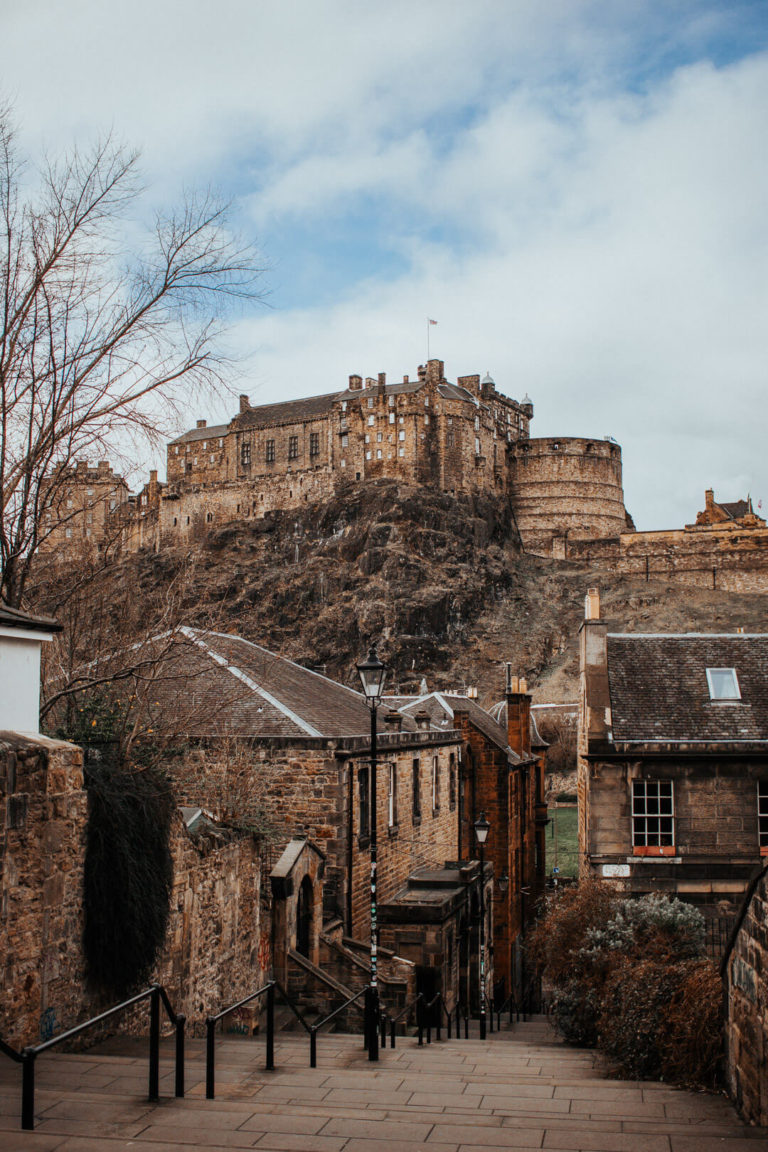The Ultimate Guide to White Sands National Monument
 White Sands National Monument, a vast, beautiful desert with the purest white sand in the middle of Southern New Mexico has always been a bucket list item of mine. This year, while driving cross country for the sixth time, I was finally able to stop and enjoy all that this magical wonder of the world has to offer. In this post, I’ll be telling you everything you need to know about White Sands.
White Sands National Monument, a vast, beautiful desert with the purest white sand in the middle of Southern New Mexico has always been a bucket list item of mine. This year, while driving cross country for the sixth time, I was finally able to stop and enjoy all that this magical wonder of the world has to offer. In this post, I’ll be telling you everything you need to know about White Sands.
What is White Sands?
White Sands National Monument is the world’s largest gypsum dunefield, covering 275 square miles with dunes reaching as high as 60 feet. Smooth white sand stretches as far as the eye can see. It’s quiet. It’s beautiful. It’s otherwordly. I have never experienced a feeling as unique as the one White Sands left me with. As I wandered along the milky white sands that felt cool against the bottoms of my feet, it was as though I was walking on the moon, or another planet entirely.
And if that doesn’t sound magical enough already, here’s what makes White Sands so unique. Gypsum sand is considered rare because gypsum is water soluble. Nearly 250 million years ago, there was an inland sea that covered this area. Over time, as the water evaporated, the minerals at the bottom of the sea formed gypsum rock. Later on, the Earth’s surface began to shift some more, and two groups of mountains formed. When the area between the two rock formations fell, it formed what is now the Tularosa Basin. Thousands of years later, the area received a great deal of rain, and Lake Otero formed. The run-off from the mountains washed gypsum down into the lake and when the lake dried up, the gypsum remained. Winds over the years have carried the sands, creating the large sand dunes we see today at White Sands National Monument.
It’s fascinating to learn about how many millions of years in the making White Sands has been and how it’s still shifting and re-shaping itself every day. You can go back to White Sands multiple times and each time it will look different because the dunes are constantly changing.
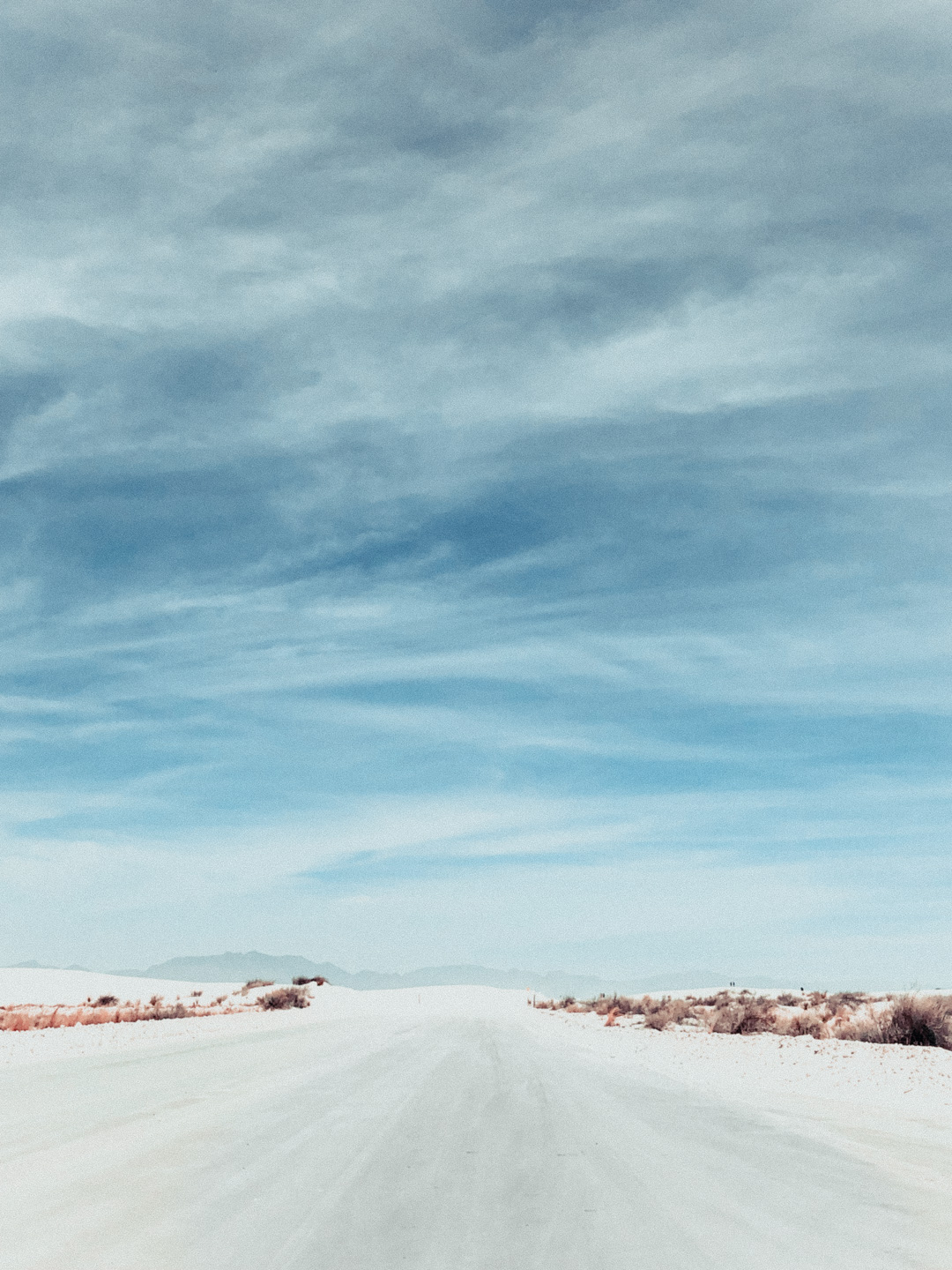

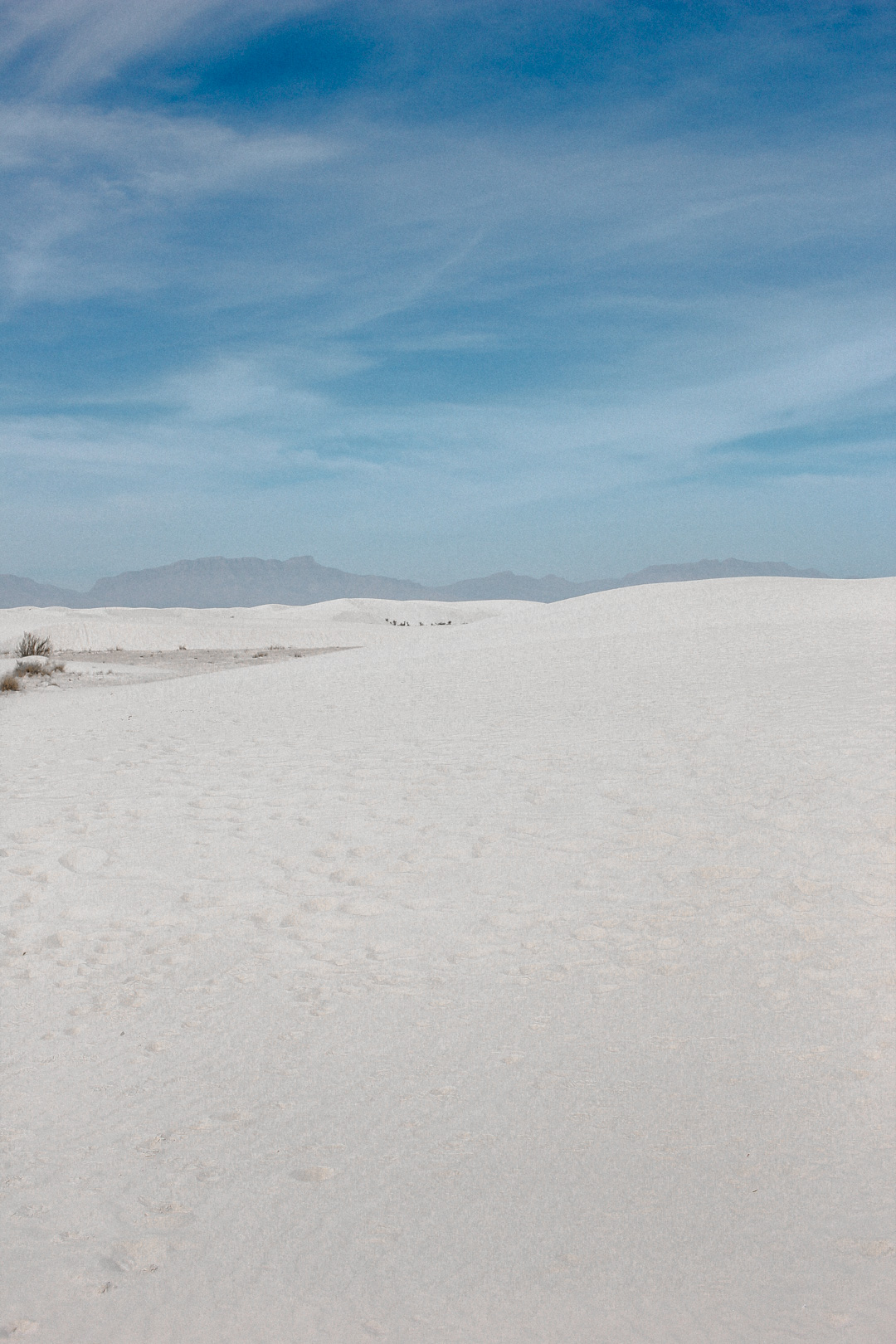 What to expect
What to expect
…besides magic, of course. Well, expect to be awe-struck. Despite how many photos of White Sands I had looked at over the years, the experience of actually being there and witnessing the wonder of Mother Nature cannot be put into words. You can prepare yourself physically for White Sands (water, food, sunscreen) but you cannot prepare yourself mentally for it. Just expect to have your breath pleasantly taken away.
Because White Sands National Monument is a protected area, be respectful of the land as well as its plants and animals who’ve had to adapt to the harsh desert climate over time. That said, do come prepared. Don’t let the beauty and tranquility of this area fool you. In the summer months, temperatures reach over 100 degrees, water is not available as soon as you pass the visitor’s center at the entrance, and wind storms have been known to occur suddenly with no warning. I’ll talk more about what extra precautions you ought to take later on.
White Sands is popular for a variety of activities. If you’re a photographer, this will easily become your creative playground. You can come here to hike, camp, pack a lunch and hang out at the very modern desert picnic tables, and you can even sled. Sledding down the dunes is a very popular activity for children and adults alike. Sleds can be purchased at the visitor’s center or you can bring your own.
Park rangers also offer nightly strolls beginning an hour before sunset where you can join a group for a leisurely 45-minute hike through the dunes. I’ve heard the sunrise is incredible here as are Full Moon nights. Oh, the wonder!
Upon paying the entrance fee to drive in (more on that below) you begin driving through a winding, desert road. It doesn’t take long to feel as though you’re driving through another planet. The dunes quickly begin to hug the road as the mountains become closer and the road disappears behind you. Welcome to wondrous White Sands!
Eventually, as the asphalt disappears, you begin driving on gypsum. Everywhere you look, you are surrounded by a blanket of white. Drive at a comfortable/safe speed for your car and be prepared for a lot of loud road noise and some hydraulics. Luckily, the roads are wide enough here that larger vehicles can pass by you should they decide to so take your time driving through. Along the 8-mile loop, you’ll see quite a few different places to pull over. We stopped at a few different areas, parked the car, and then began the climb up the rather steep dunes. The real magic awaits at the top, as you stare out at this magical universe that lies at your feet.
It’s magic in its purest form.

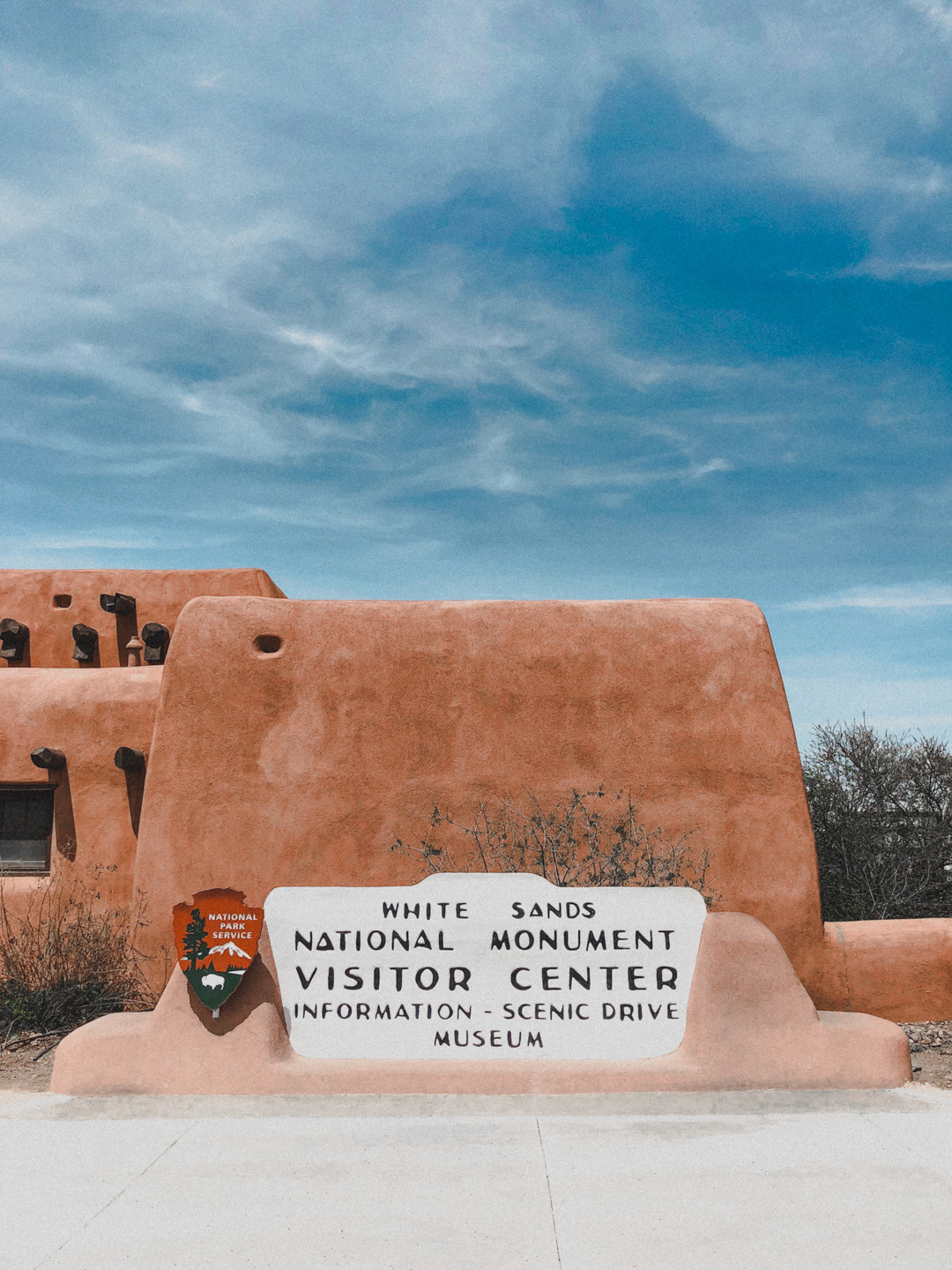

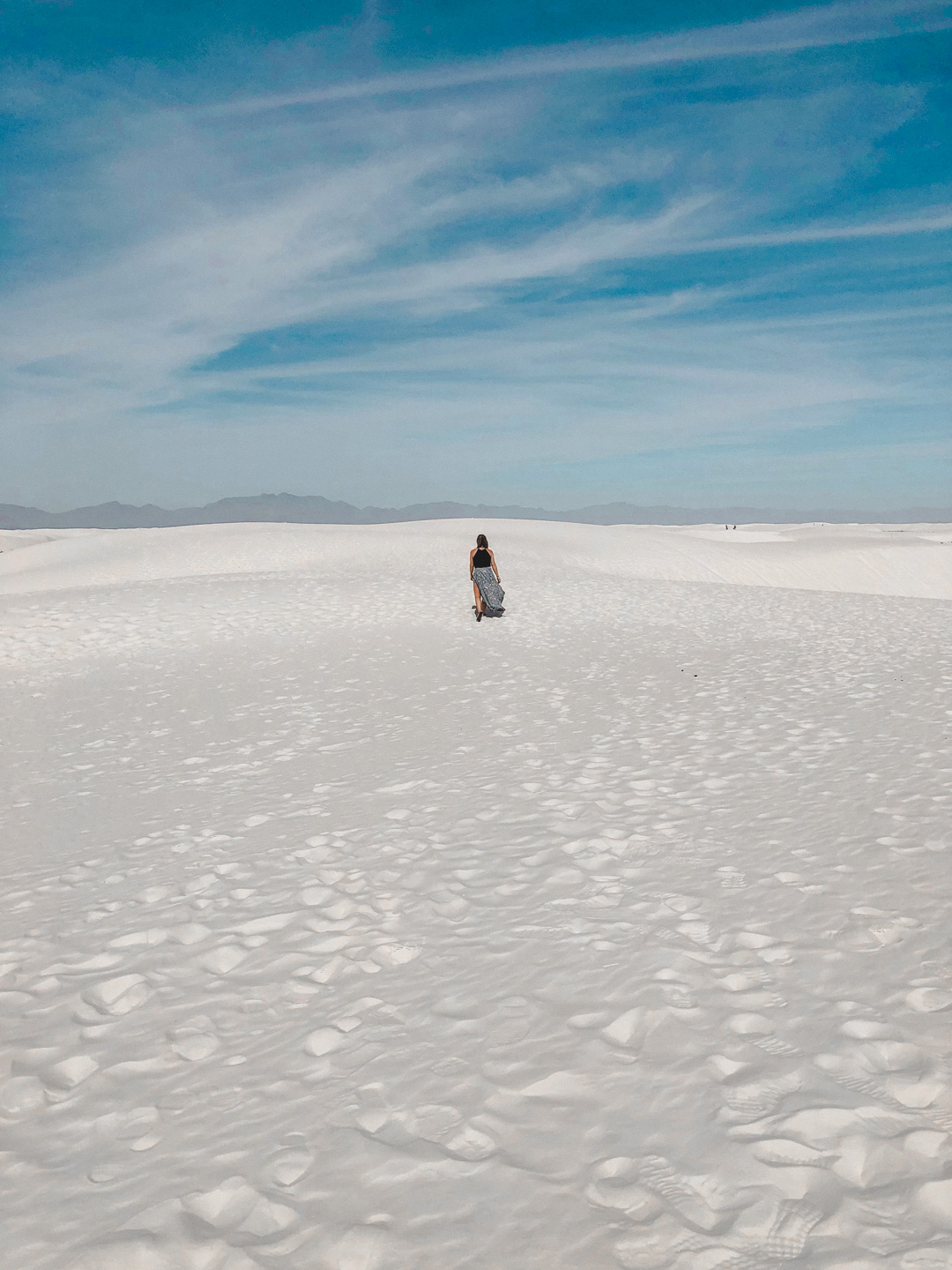
Cost
$5 per adult. Children under 16 are free or $30 for the White Sands National Monument Annual Pass.
How to get there
Since I was driving from California to DC, we spent the night in Las Cruces, New Mexico which is 52 miles away. If you’re flying, most people fly into El Paso, Texas and then drive about 80 miles to White Sands. You will not be able to access the Monument by public transportation so be sure to rent a car either in Las Cruces, El Paso, or Alamogordo. Speaking of Alamogordo, it’s the closest town to White Sands where you’ll find restaurants, hotels, a Wal-Mart and some other local stores.
Accommodations: Where to stay
If you’re planning to visit White Sands for multiple days, Alamogordo is the closest town to stay in a hotel. Just 15 miles east of the Monument, it’s an easy drive. There is also the option to camp onsite at White Sands. Backcountry camping is the only camping allowed at White Sands and requires hiking at least one mile to a campsite. No RV or car camping is permitted. You can click here for more information on camping.
Personally, we stayed in a hotel in Las Cruses since we were driving from Tucson the night prior. I love to use Booking.com to find the best rate. Feel free to use my link to get $25 off your first reservation. It was an easy, beautiful drive from Tucson.
Related Reading: What to Do in Tucson, Arizona
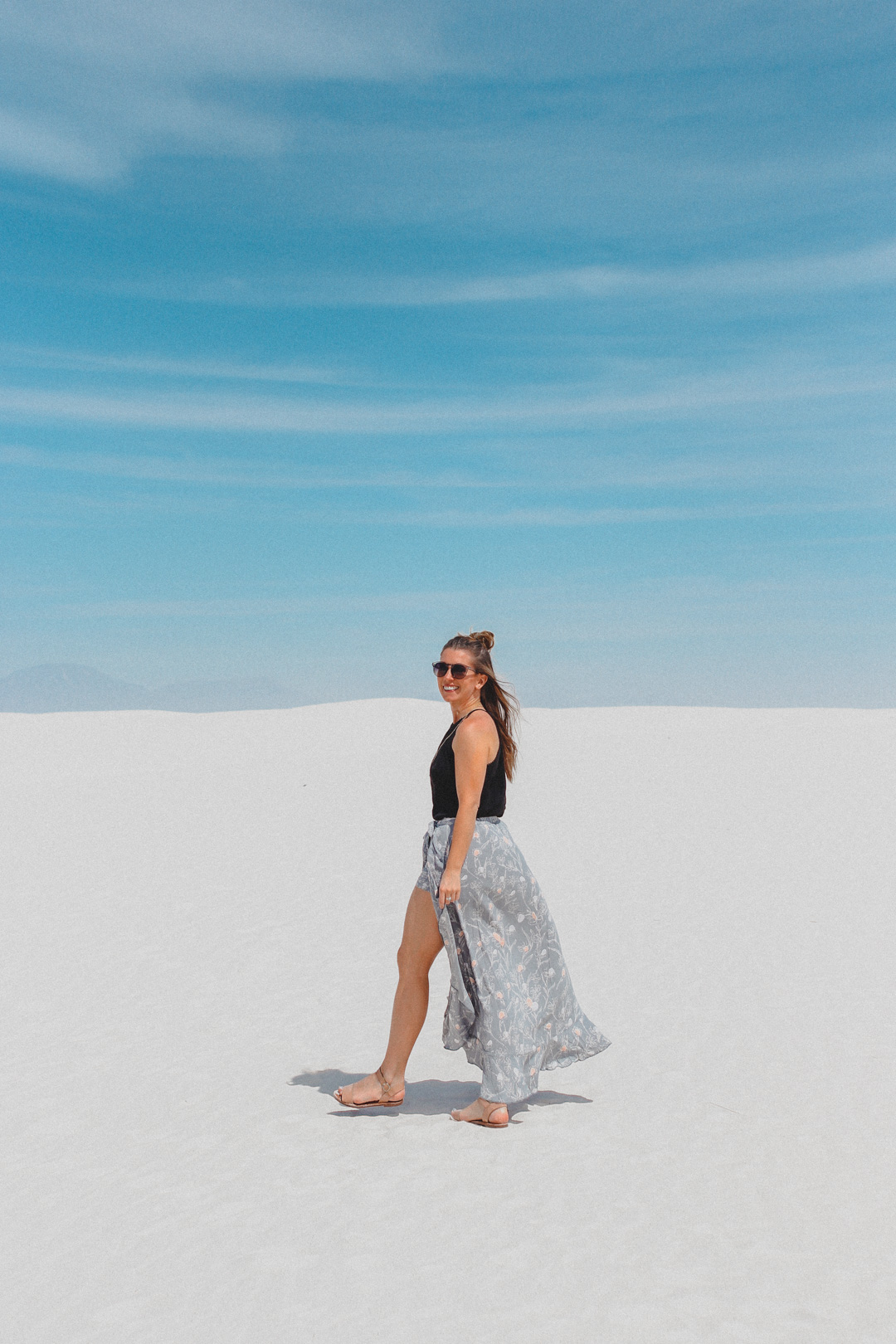



What to bring
Water! There is no water in the dunefield and the weather at White Sands can often be extreme!
Pets. Pets are permitted at White Sands as long as they are leashed and picked up after. Again, keep the weather in mind when it comes to your decision about bringing an animal with you.
Sunscreen and sunglasses are also a must. We visited in early April and the temperature was pretty perfect. Not too hot, not too cold. At that time of year, it can still be chilly in the mornings and evenings so a sweater or light jacket would also be wise to bring along.
Don’t forget your camera either but keep the sand in mind as just a little bit of wind is all it takes to damage your lens!
Alerts
White Sands Missile Range regularly conducts missile tests. For visitor safety, the only road into the dunefield, Dunes Drive, may be closed for several hours at a time. You can check the upcoming closures here and it is highly recommended to check again 24 hours before your trip. While you’re at it, check the hours of operation for the date(s) you’ll be visiting as the Monument hours vary by season. We were planning to visit on a Friday but checked early and saw there would be missile testing that morning so we pushed our trip back a day.
Bring water! There is no water in the dunefield and the weather at White Sands can often be extreme and unforgiving. As I mentioned earlier, summer temperatures can reach over 100 degrees so be prepared and always play it safe.
Pets are permitted at White Sands as long as they are leashed and picked up after. Again, keep the weather in mind when it comes to your decision about bringing an animal with you.
Visiting White Sands National Monument was truly a dream come true. It was even better, even dreamier, than I had anticipated. Just like driving across the U.S. at least once, visiting White Sands is also something that I recommend to everyone. The American Southwest has so much to offer. There is so much to be experienced throughout this beautiful land, especially the Land of Enchantment. I can’t wait to go back.
Follow along on Instagram @ChelseaDinen for more!
